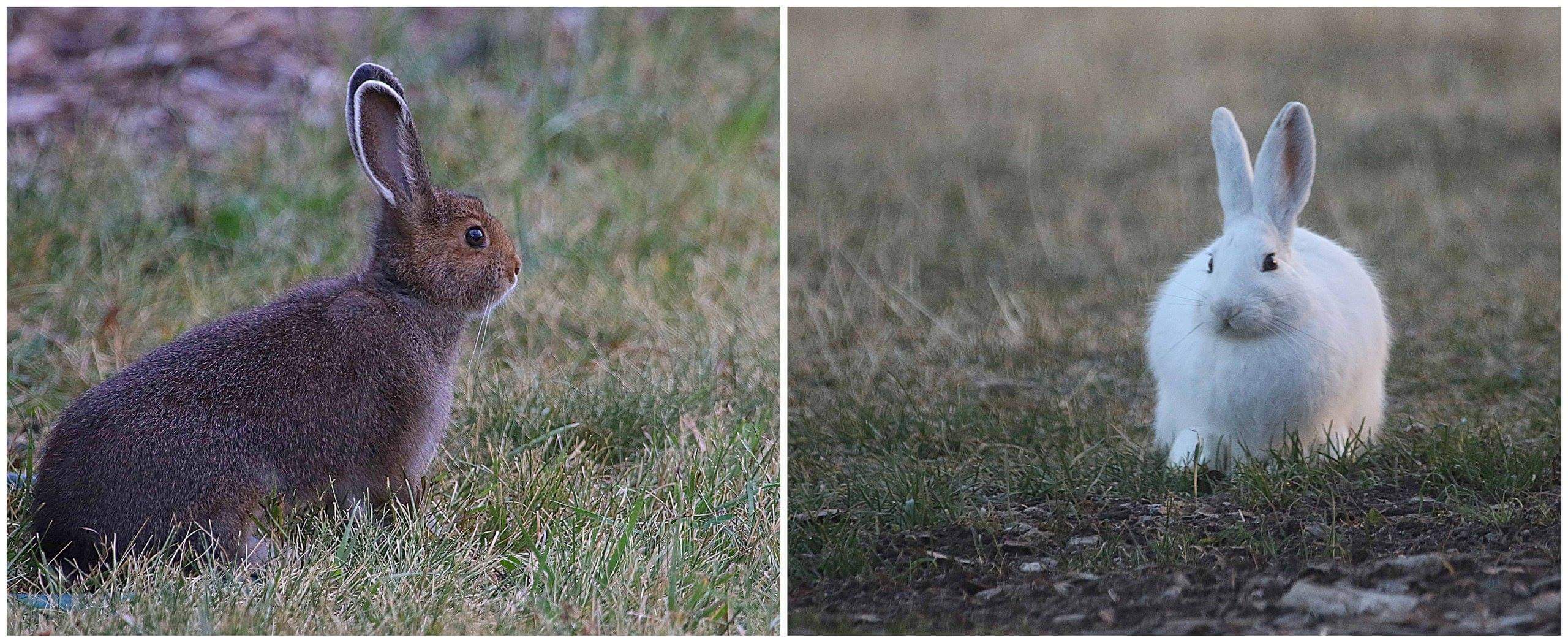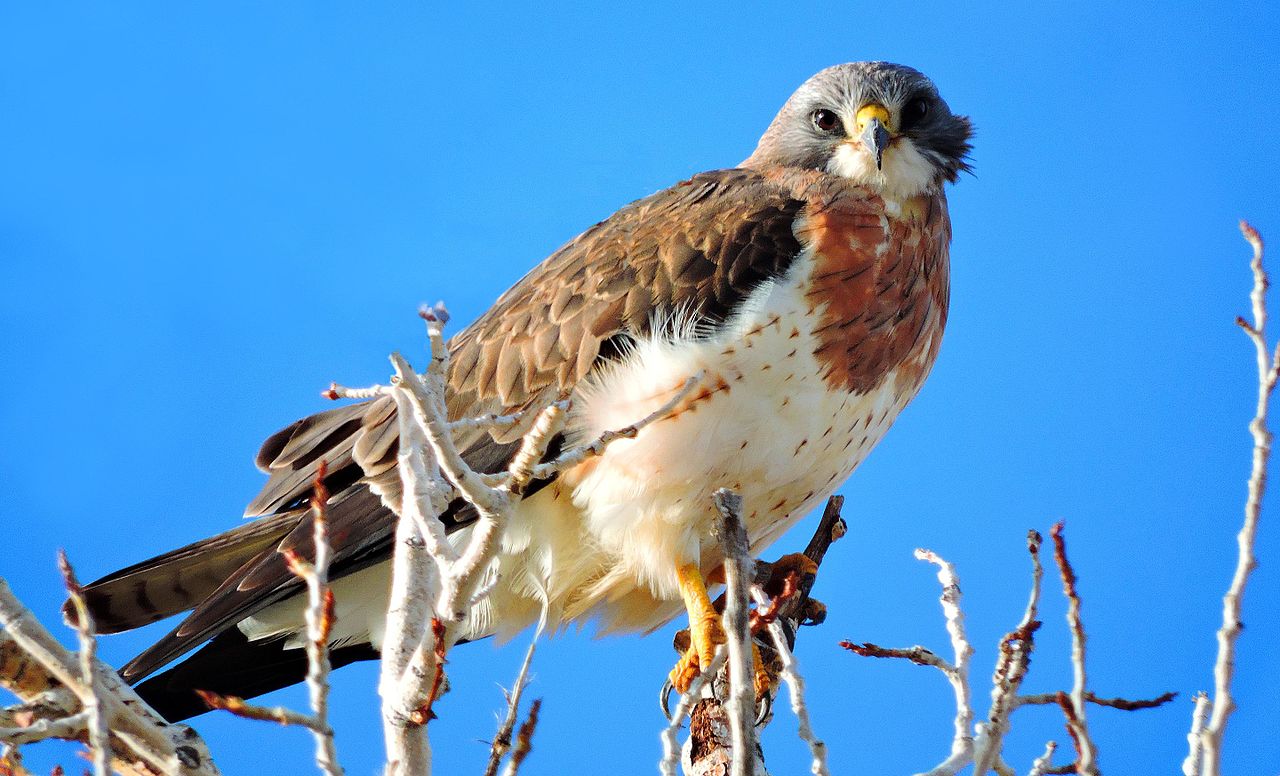ST. GEORGE — Cool mornings, mild afternoons and even early snowstorms have marked the transition into autumn, and Southern Utah residents are already preparing for winter.

While people can spend more time indoors or put on additional layers of clothing, wildlife don’t have access to the same creature comforts. Each species, from bears to birds, has its own way of dealing with wintry weather.
Keith Day, native species biologist with the Utah Division of Wildlife Resources, said lower temperatures can also bring animals in closer contact with humans, something especially apparent on highways and roads this time of year.
“A lot of people choose the best places to live where animals live too,” Day said. “Lower elevations – where most of our population centers are – also tend to be wintering areas. Bears don’t typically hibernate in your garage, but deer do move to lower elevations and a lot of highways were put in across deer migration routes.”
Whether in a vehicle or in your own backyard, the important thing to remember is to always avoid confrontation with wildlife, Day said. Drive carefully on roadways where deer may cross and contact the Division of Wildlife Resources if you have trouble with a wild animal.
Winter does have its perks when it comes to wildlife. Migrations and seasonal changes can make many species more visible from October to March, and some species only visit the region during the coldest months.
“Winter can be a good time for observing wildlife, because they often come down into areas closer to people,” Day said. “There are also biological adaptations and behavioral changes, but those changes to behavior are usually to get to more suitable habitat during the wintertime.”

Mammals
Mountain lions, deer, squirrels, hares and many other mammals range throughout Southern Utah.
Mammals display the full range of wintertime behaviors, but are perhaps best known as hibernators. Bears, bats and prairie dogs all take extended rests when winter sets in. Day said these long periods of inactivity are actually a form of torpor, which differs from hibernation primarily in terms of length.
“They don’t just go to sleep and not wake up again until spring,” Day said. “There are some species in the world that do that. Most of them are arctic species or sub-arctic species. (Regional) species will go into a torpor with some short periods of activity.”
However, torpor is not a one size fits all solution. Many bat species choose to migrate to warmer climates where they can continue to be active, and deer are known to travel as far as 150 miles or more during winter migrations.

Those mammals that stick around and remain active usually possess some form of biological adaptation to better handle the frigid temperatures and increased threat of predation. Almost all local mammals develop thicker coats of fur for part of the year, and some prey species, including the snowshoe hare and the ermine, replace the brown fur of summer with a white winter coat.
Reptiles, Amphibians and Fish
Compared to their hairy or feathered peers, scaly species adopt more broad patterns of behavior when cold weather arrives.
“Most of the reptiles and amphibians go really dormant during the winter,” said Kevin Wheeler, a reptile, amphibian and fish biologist with the Division of Wildlife. “Desert tortoises, for example, go into deep burrows or find natural caves or crevices they’ll crawl into to hibernate through the winter. Other reptiles will also go underground and hibernate.”

Iron County has fewer reptiles and amphibians than Washington County, both in terms of species diversity and total count. This is due in large part to the temperature differences, Wheeler said.
“These species are what we used to call ‘cold-blooded,’” Wheeler said. “They rely on warm temperatures to be active. Unless you have warm days, they’re all going to stay hidden. Even the fish seem to ball up and slow down their metabolisms. They’re less active and they’re harder to find.”
There are still a lot of unknowns when it comes to reptile and amphibian behavior in winter. Sometimes they show signs of communal hibernation, though some seem to prefer solitude. Migration is practically unheard of, though some species may relocate within their established territory to a winter burrow.
Some Utah fish species have been tracked traveling hundreds of miles, but barriers in some local rivers prevent long migrations of resident fish – if they ever used to migrate in the first place.
Birds
In Day’s words, “Birds don’t hibernate, they move.”
Most songbirds are migratory, relocating to warmer climes when a chill settles in the air. The Southern Utah bird that may be the champion migrant is actually a raptor. After it leaves near the beginning of fall, the avian may travel over 6,000 miles to its other home.

“The Swainson’s hawk migrates down to Argentina, and it may be the longest migrant, though I can’t say for sure,” Day said. “A lot of our songbirds will go to Central America or even northern South America.”
Southern Utah also welcomes “snowbirds,” and not just the people variety. Red-tailed hawks, golden eagles and ferruginous hawks also have some presence here year-round, but their populations are bolstered with winter migrants.
“Probably the most notable wintertime resident is the bald eagle,” Day said. “We do have bald eagles nesting and summering in Utah, but the numbers are still fairly low. In the wintertime, we have bald eagles move into Utah in great numbers from Idaho, Montana and parts of Southern Canada.”
The visiting birds Utah sees are mostly birds of prey, and they eat the small mammals that remain active during the winter. Some local birds stick around, but migrate between elevations. The Northern Flicker and Mountain Bluebird typify this behavior, moving to lower elevations when cold weather sets in.
Winter can be a difficult time for Southern Utah’s creatures. Whether it’s enduring snow that will sustain the region in the summer or migrating long distances to fertile breeding grounds, the challenges faced by individuals may sustain the species.
More information about local wildlife can be found through the Utah Division of Wildlife Resources, Red Cliffs Desert Reserve or USU Extension.
Copyright St. George News, SaintGeorgeUtah.com LLC, 2021, all rights reserved.